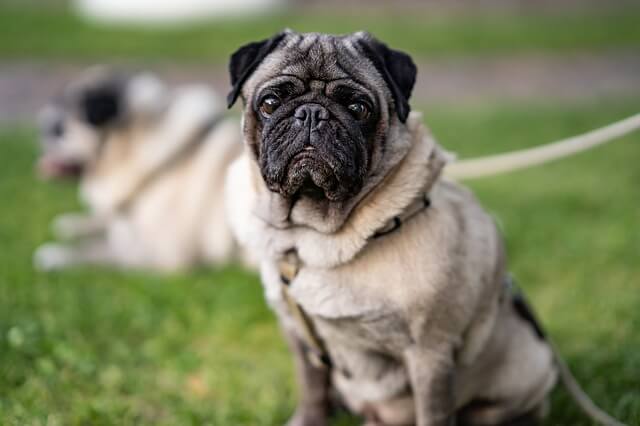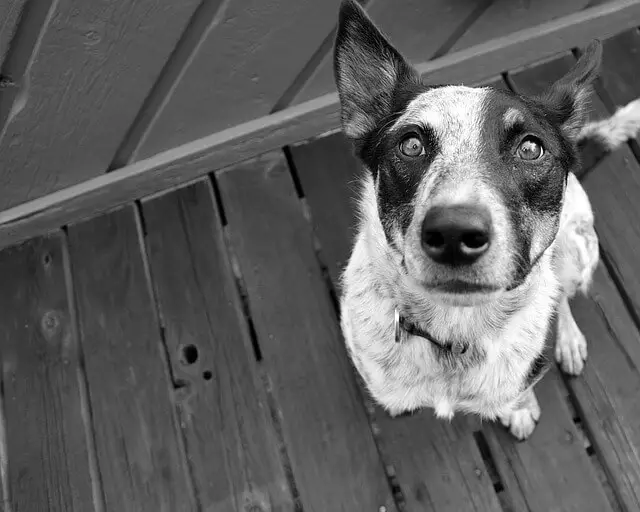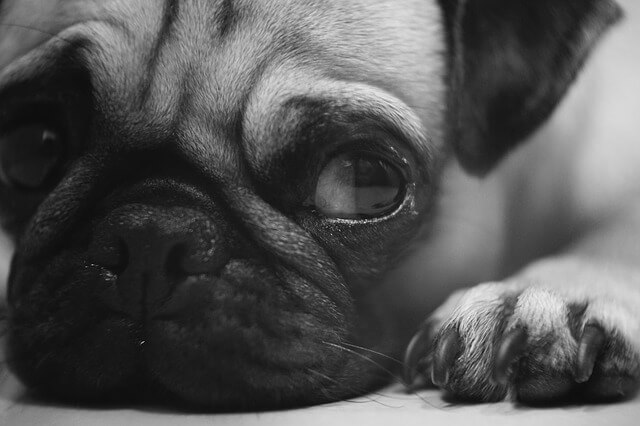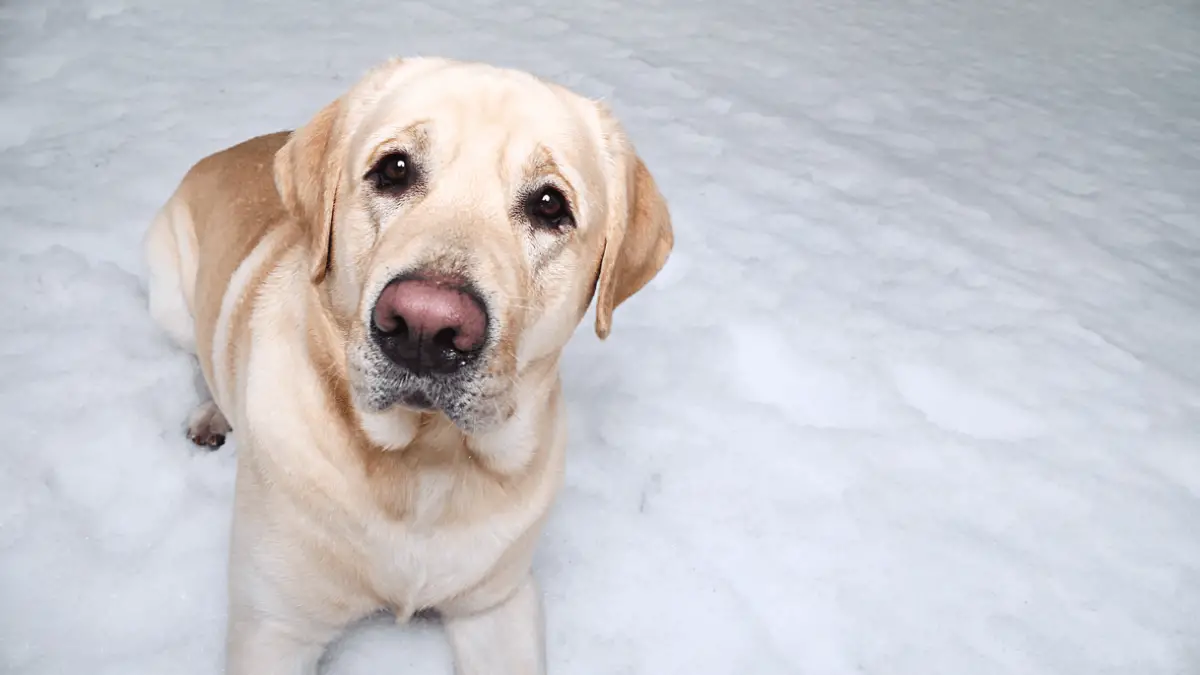Cloudy Eyes in Dogs - 7 Reasons Why Dogs Get Them
29.03.2021.
Dog owners are always worried about their dog’s health, so it is not a big surprise we worry if we notice cloudy eyes in dogs. Cloudy eyes in dogs can be a symptom of numerous health issues, and the best thing you could do is contact your vet and get an appointment.
Some of these health concerns might not require immediate attention, but some can. It is best not to wait and risk your dog’s eye health. These are the most common reasons for cloudy eyes in dogs;
1. Cataracts
Cataracts can affect humans and dogs. The symptoms are similar. You will notice a white, milky change in your dog’s lens. Cataracts happen because of abnormal lens metabolism. Human and dog lenses are made of protein and water, and if they start lumping together, it will appear as if your dog has cloudy eyes.
Cataracts can develop due to old age, trauma, diabetes, genetics, and other metabolic diseases. The lens protein will start lumping together and interfering with your dog’s vision. If they are not treated, cataracts can lead to complete blindness. Some breeds are especially prone to cataracts. Those breeds are;
- Boston Terrier
- Bichon Frise
- Australian Shepherd
- French Bulldog
- Havanese
- Amstaff
- Miniature Schnauzer
- Poodle
- Silky Terrier
- Labrador
- Husky
- Westie
- Cocker Spaniel
Treatment
Luckily, if cataracts are spotted early, they can be managed. There is a surgical procedure that can be done, so it is vital dog owners notice these issues as soon as possible. If left untreated, cataracts can lead to glaucoma. If you want to know more about cloudy eyes in dogs caused by cataracts, check out this article - Cataracts in dogs.
2. Nuclear Sclerosis
As dogs age, it is absolutely normal and expected some cloudiness will appear. Nuclear sclerosis is the main reason dogs get cloudy eyes. Cataracts and nuclear sclerosis are often mistaken for one another, but vets can spot some subtle differences. Cataracts are white, cloudy, and opaque, while nuclear sclerosis is cloudy and blueish.

The good news about nuclear sclerosis in dogs is that it is not as dangerous as cataracts. It won’t affect your dog’s vision, although it might mess with their ability to focus on things. This eye change is associated with age, and it can be dangerous only if the dog develops cataracts simultaneously.
Treatment
The vet will let you know what the best treatment option is. Usually, there is no need for any treatment because this is not a severe health issue. Nuclear sclerosis needs to be regularly checked. Vets that take care of dogs with nuclear sclerosis will usually ask owners to bring their dogs every six months. The key thing vets will look for is the development of cataracts.
3. Glaucoma
One of the most severe reasons for cloudy eyes in dogs is glaucoma. Glaucoma is when the eye pressure significantly increases and can permanently damage the eye structure. If not treated immediately, it can lead to blindness. Glaucoma is very painful for dogs. If you notice your dog suddenly develops cloudy eyes, you should seek veterinary assistance immediately.
There are two types of glaucoma - primary and secondary. Primary glaucoma is inherited, and other eye issues like tumors, cataracts, trauma, lens luxation, or retinal detachment cause secondary glaucoma. Some dog breeds are especially prone to developing cloudy eyes due to primary glaucoma, and some of those breeds are;
- Dalmatian
- Akita
- Chow Chow
- English Cocker Spaniel
- Jack Russell Terrier
- Beagle
- Basset Hounds
- Nordic breeds (Laikas, Huskies, Malamutes, Eskimo Dogs)
Treatment
There is no cure for glaucoma. The best thing we can do is monitor the existing condition and keep it under control with medications. Your vet must determine what type of glaucoma is causing cloudy eyes in dogs because the therapy approach is different. Various options will depend on the severity of your dog’s glaucoma. These options are implants to facilitate drainage, laser therapy, eye removal, cyclocryotherapy, and gentamicin injections. In the worst cases, the vet will have to perform surgery to clear whatever is causing secondary glaucoma.
If you want to know more about glaucoma, check out this article - Glaucoma in dogs.
4. Anterior Uveitis
Another possible reason for cloudy eyes in dogs is anterior uveitis. This is an inflammation of one or all tissue structures in the front of the dog’s eye. That refers to the choroid, ciliary body, and iris. This is considered a medical emergency and will require immediate vet attention. If left untreated, anterior uveitis can lead to blindness in the affected eye.

If you notice your dog develops a cloudy eye, you can look for other symptoms that would point to anterior uveitis. Those symptoms are swelling, oddly-shaped pupils, excessive tearing, redness, discharge, and cloudy eyes. This eye issue can develop for many reasons. Some are autoimmune disorders, tumors, trauma, bacterial, viral, and fungal infections, parasites, and metabolic diseases.
Treatment
Anterior uveitis treatment will entirely depend on the cause. Your vet can run many different diagnostic tests that will help them find the culprit and the reason for cloudy eyes in your dog. The usual way to approach the anterior uveitis treatment is through eye drops or ointments and oral medications to help fight the issue.
If you want to know more about eye infections in dogs, check out this article for more information - Eye infections in dogs.
5. Dry eye
Another possible reason for cloudy eyes in dogs is dry eyes. The worst cases can lead to ulceration and permanent damage to the eye. Dogs mainly develop dry eyes because their body doesn’t produce enough tears to keep the eye moist and healthy. The scientific term for this issue is keratoconjunctivitis sicca. If this issue is left untreated, it can lead to scarring of the eye and the appearance of cloudiness.
There are two breeds especially prone to keratoconjunctivitis sicca - Pugs and Yorkies. The best way to notice dry eye is to look for other symptoms, such as swelling of the eye tissue, redness, mucus discharge, excessive blinking, and squinting.

Treatment
Luckily, dry eyes can be treated relatively successfully. If diagnosed early, vets can prescribe antibiotics or tear-stimulating medications. In the most severe dry eye cases, your vet might recommend a surgical option that will stimulate the dog’s tear production. If this condition is treated and monitored, the dog can live a healthy and pain-free life.
If you want to know more about dogs and tears, check out this article - Do dogs cry?
6. Ulceration
Ulcers on the dog’s eyes are basically sores. They can appear for several reasons. The most common ones are dry eyes, rubbing the eye on a rough surface, bacterial or viral infections, rubbing trauma, or another animal scratching the dog’s eye, distichia, and entropion.
Ulcers causing cloudy eyes in dogs are considered a serious condition that will require medical attention. Make sure you call your vet as soon as you notice anything wrong with your dog’s eyes. If these ulcers become infected, they can lead to permanent damage.
Treatment
Your vet will recommend eye drops to control inflammation and reduce the dog’s pain levels. The vet will recommend surgery to save the dog’s eyes and vision if necessary. Make sure you call your vet as soon as you notice anything going on with your dog’s eyes, and especially if you suspect ulcers.
7. Corneal Dystrophy
Another possible reason for cloudy eyes in dogs is corneal dystrophy. This issue can give an opaque, cloudy eye appearance, and it is an inherited condition. Three main types of corneal dystrophy cause cloudy eyes in dogs. They are;
- Endothelial corneal dystrophy - This type forms in the deepest corneal levels. It usually affects older and middle-aged dogs.
- Stromal corneal dystrophy - This type will affect the middle corneal part. Breeds like Airedales, Cockers, Samoyeds, and Cavaliers are prone to this type of corneal dystrophy.
- Epithelial corneal dystrophy - This type of corneal dystrophy affects the topical levels. The breed is prone to it is Shetland Sheepdog. This issue can be very discomforting to dogs.
Treatment
Your vet first needs to use a light microscope to determine what type of dystrophy affected your dog. The most common approach to corneal dystrophy treatment is antibiotics. Even after the treatment is administered, cloudy eyes in dogs can still remain present. Luckily, this issue doesn’t lead to vision impairment but can lead to ulceration if left untreated.
In conclusion
Your dog’s eyes are essential, and if you notice cloudy eyes in your dog, make sure you call the vet. There are different reasons your dog can develop cloudy eyes. While some might be benign, others can be very severe with a need for immediate vet attention. It is better not to risk your dog’s health and take them to the vet as soon as possible.
World Dog Finder team







Share